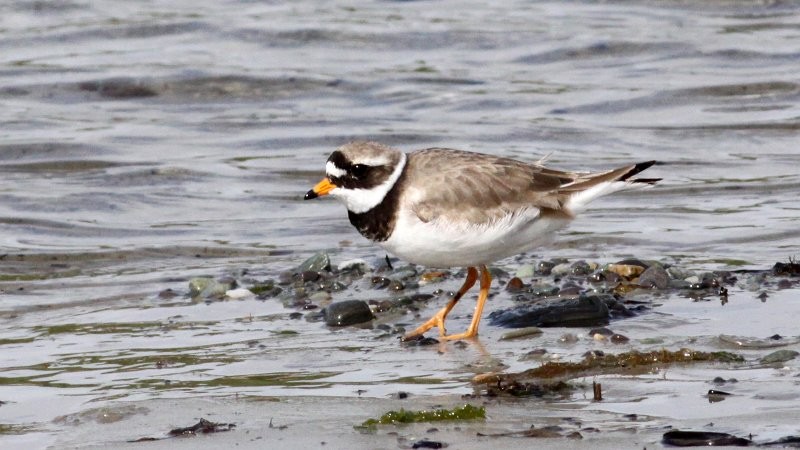Common Ringed Plover
A species of Typical plovers Scientific name : Charadrius hiaticula Genus : Typical plovers
Common Ringed Plover, A species of Typical plovers
Botanical name: Charadrius hiaticula
Genus: Typical plovers
Content
Description People often ask General Info
 Photo By Ken Billington , used under CC-BY-SA-3.0 /Cropped and compressed from original
Photo By Ken Billington , used under CC-BY-SA-3.0 /Cropped and compressed from original Description
Adults are 17–19.5 cm (6.7–7.7 in) in length with a 35–41 cm (14–16 in) wingspan. They have a grey-brown back and wings, a white belly, and a white breast with one black neckband. They have a brown cap, a white forehead, a black mask around the eyes and a short orange and black bill. The legs are orange and only the outer two toes are slightly webbed, unlike the slightly smaller but otherwise very similar semipalmated plover, which has all three toes slightly webbed, and also a marginally narrower breast band; it was in former times included in the present species. Juvenile ringed plovers are duller than the adults in colour, with an often incomplete grey-brown breast band, a dark bill and dull yellowish-grey legs. This species differs from the smaller little ringed plover in leg colour, the head pattern, and the lack of an obvious yellow eye-ring. 
Size
19 cm
Colors
Black
Gray
White
Life Expectancy
10 years
Nest Placement
Ground
Feeding Habits
Common Ringed Plover forages primarily on beaches and tidal flats, visually hunting for insects, crustaceans, and worms. The species exhibits unique feeding behaviors suited to diverse coastal ecosystems.
Habitat
Common Ringed Plover primarily resides in open coastal lands, including beaches, estuaries, and mudflats, within northern Eurosiberia and Arctic northeast Canada for breeding. Their habitat extends to inland wetlands such as rivers and tundra, with some adapting to man-made environments like gravel pits. Migration preferences lean towards softer sediments, with elevations up to 1200m serving as breeding grounds. Certain populations are resident in Great Britain and northern France year-round.
Dite type
Insectivorous
People often ask
General Info
Feeding Habits
Bird food type
Sounds
Call
Recording location: Netherlands
Call
Recording location: Netherlands
Song
Recording location: Netherlands
Species Status
Not globally threatened.
Scientific Classification
Phylum
Chordates Class
Birds Order
Shorebirds Family
Plovers Genus
Typical plovers Species
Common Ringed Plover